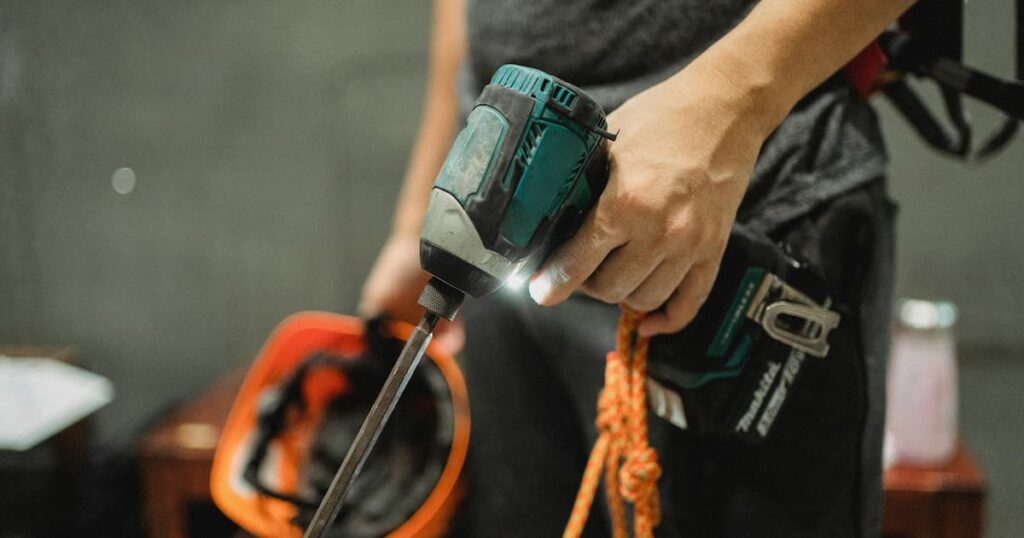
No Falls Week is a vital safety campaign that highlights the risks of working at height and promotes preventative measures to reduce accidents. One of the most effective and often overlooked safety practices is tool tethering. This simple step can prevent injuries and fatalities caused by dropped tools, protecting not only the worker but also everyone below.
According to the Health and Safety Executive (HSE), the first rule of working at height is:
“Avoid working at height where it is reasonably practicable to do so.”
This means that before any task is undertaken at height, you should assess whether it can be done in a safer way from the ground. Only when it’s unavoidable should you proceed with the necessary controls and safety measures in place. This principle is a cornerstone of the Work at Height Regulations 2005 and is designed to reduce the risk of serious injuries and fatalities.
Many workers underestimate the danger of a falling object. Physics tells a different story. As a tool falls, it gains speed—and with that, force. For example, a standard screwdriver dropped from just 14 metres (roughly four storeys) can hit the ground with an impact force equivalent to 74kg. Even a hard hat won’t offer sufficient protection against that kind of blow.
Tool tethering is not just a precaution – it’s a lifesaving necessity.

Each worksite presents its own unique set of risks. A single inspector might not spot everything, which is why multiple independent risk assessments are recommended. Different perspectives often reveal overlooked dangers.
Also, never ignore “unlikely” risks. In high-risk environments, even rare events can and do occur. It’s essential to take all identified risks seriously and adapt your safety measures accordingly. Continuous improvement and regular reviews are key.
Learn more about the steps involved in a work at height risk assessment.
Besides tethering, there are a variety of safety controls that must be considered when working at elevation. These include:
Always refer to the Work at Height Regulations 2005, which mandate that all work at height be conducted safely, or avoided if possible. Where work cannot be done at ground level, appropriate fall-prevention systems must be used.
Tool tethering serves two purposes:
Dropped tools often need replacing, and over time, those costs add up, especially on large, multi-level job sites.

There are several tool tethering methods available, depending on the type and weight of your tool:
Always choose the right tethering solution based on the weight, shape, and use of the tool.
Would you like to learn how to tether your tools at speed? It only takes a minute to save a life.
At Leading Edge, we offer a comprehensive range of tool tethering solutions and safety equipment designed for working at height.
Want to become an expert? Enrol in our Tool Tethering Competent Person Course to learn how to select and apply the best solutions for your specific tools and job site needs.
Get in touch with us today to learn more and take the first step toward safer, smarter work at height.
Copyright 2025 Leading Edge Safety. Devloped by Czargroup Technologies
